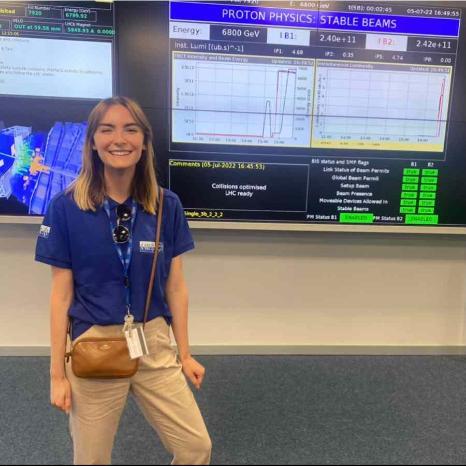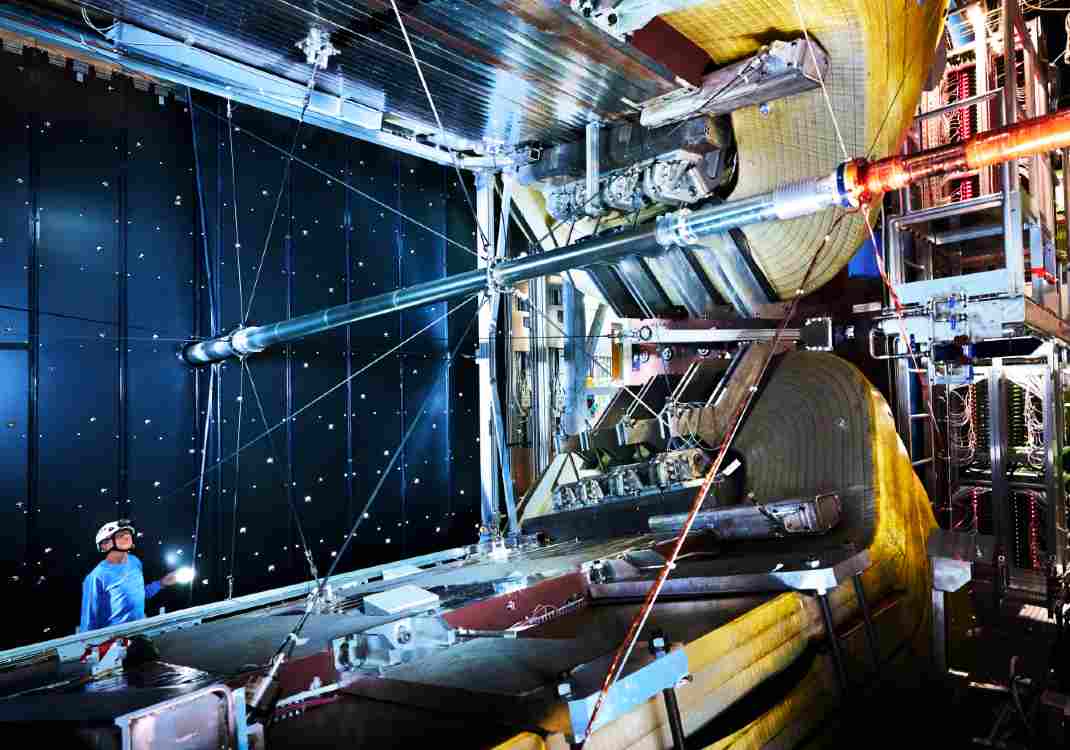 Operations at the Large Hadron Collider (LHC) at CERN restarted in July this year, at record-breaking energies. UCD student Amanda Donohoe was in the control room of LHCb, one of four experiments on the LHC.
Operations at the Large Hadron Collider (LHC) at CERN restarted in July this year, at record-breaking energies. UCD student Amanda Donohoe was in the control room of LHCb, one of four experiments on the LHC.
Fourth-year PhD student Amanda is part of UCD experimental particle physics groups that are the only Irish involvement in the LHC. Originally from California in the US, but with roots in Ireland, UCD was the obvious destination for her when looking to do research into the fundamental nature of matter.
The LHC is a 27km long machine, buried 100m below the Franco-Swiss border, that accelerates protons to almost the speed of light and collides them together to reproduce the energy conditions last seen one-billionth of a second after the Big Bang. In 2012, CERN (the European Organization for Nuclear Research) announced that LHC experiments had led to the discovery of the Higgs boson – famously known as the ‘God Particle’ – for which the Nobel prize was awarded the following year. In 2019, the LHC was shut down for upgrade works and has now restarted operations at the highest energies ever created by humans.
Over the years, the UCD group has made significant discoveries at the LHC, including exploration of top-quark and Higgs-boson physics with the CMS detector. They found the first W and Z bosons at the LHCb (Large Hadron Collider beauty) experiment. These fundamental particles, cousins of the Higgs boson, explain the process of radioactivity.
More recently they have been studying exotic configurations of matter. It is known that the proton consists of three quarks but open questions remain about whether four or five quark states are possible and how the quarks are held together by so-called gluons. A recent UCD thesis has candidates for four-quark states – and now Amanda’s research is examining the glue that binds it all together, looking for super-saturated states of matter.
Amanda will spend about a year at CERN helping with the data-taking on the LHCb experiment. She is a member of the team of people that are present in the control room 24 hours a day, with responsibility for ensuring the safety of the operations and the integrity of the data. She said: “It's an amazing experience to be at the very centre of the operation of the largest scientific experiment in the world!
“In this LHC run, we’re measuring how often a subatomic particle, called the rho meson, is produced, which lets us take an 'x-ray' of the colliding protons to see what’s inside them. Emerging results so far suggest that the interior of the proton may not be uniform but consist of ‘hot spots’ or ultra-dense regions of gluons. If that turns out to be true, then seeing them for the first time would revolutionise the way we look at the proton.”
On Amanda’s shoulders rests the responsibility for collecting the data that will be used for hundreds of scientific results that come from the LHC each year and, of course, for her own thesis.
UCD Particle Physics research is led by Professor Ronan McNulty and Professor Martin Grünewald and is the only experimental group in Ireland that works on the physics of the LHC. Their work includes precision tests of the Standard Model of Particle Physics and the discovery of the Higgs boson.
The 'Large Hadron Collider beauty' experiment apparatus (Image: CERN). Click to explore the LHCb experiment through Google Street View
